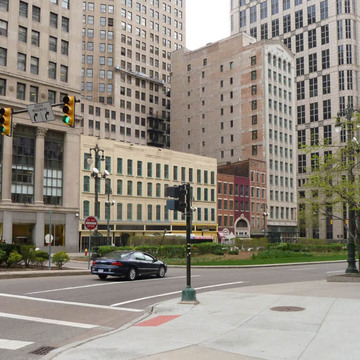Known as Michigan's Main Street, Woodward Avenue has been the main transportation corridor since Judge Woodward prepared his city plan of 1805. Woodward Avenue was once Detroit's primary shopping district. Hudson's, Himmelhoch's, Wright Kay, Siegel's, and Grinnell's all survived the movement to the shopping malls in the 1960s but closed by the 1980s. Just north of Campus Martius and Compuware, along two blocks of Woodward across from the site of Hudson's Department Store, now demolished, Schostak Brothers and Sterling Group, Southfield and Detroit developers, with architectural design assistance from Kraemer Design Group, converted stores into housing and retail space called the Lofts of Merchant Row. Rehabilitated were five former commercial buildings, including the former Woolworth and Frank and Seder department stores and S. S. Kresge. Having stood vacant for twenty years, the upper stories of the buildings were divided into 157 rental residential units. A parking garage was added. The rehabilitation project was funded, in part, with state and federal historic preservation tax credits. It won a Governor's Award for Historic Preservation in 2005.
From the Detroit River, Woodward Avenue extends north beyond city limits at Eight Mile Road through northern suburbs to Pontiac following the old Saginaw Trail first trod by Native Americans. The entire length is a National Byway so designated by the Federal Highway Administration in 2002.











